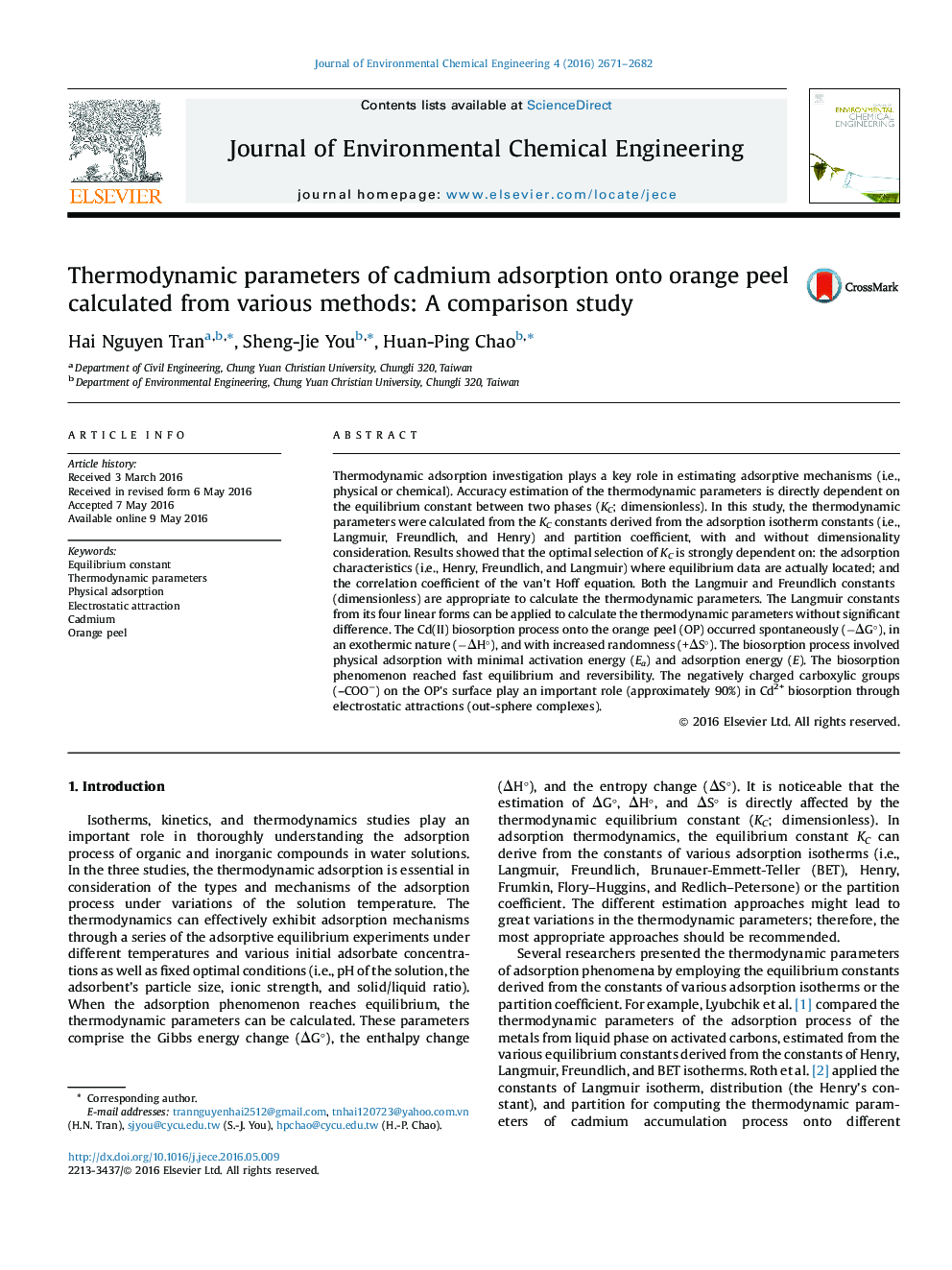| Article ID | Journal | Published Year | Pages | File Type |
|---|---|---|---|---|
| 221531 | Journal of Environmental Chemical Engineering | 2016 | 12 Pages |
•The thermodynamic parameters were calculated from the Langmuir, Freundlich, Henry, and partition constants.•The thermodynamic parameters were strongly dependent on derivation of the applied constants.•The Langmuir and Freundlich constants (dimensionless) were appropriate for calculating the thermodynamic parameters.•The adsorption mechanism involved physical adsorption.•Electrostatic attraction played a primary role in the adsorption process (∼90%).
Thermodynamic adsorption investigation plays a key role in estimating adsorptive mechanisms (i.e., physical or chemical). Accuracy estimation of the thermodynamic parameters is directly dependent on the equilibrium constant between two phases (KC; dimensionless). In this study, the thermodynamic parameters were calculated from the KC constants derived from the adsorption isotherm constants (i.e., Langmuir, Freundlich, and Henry) and partition coefficient, with and without dimensionality consideration. Results showed that the optimal selection of KC is strongly dependent on: the adsorption characteristics (i.e., Henry, Freundlich, and Langmuir) where equilibrium data are actually located; and the correlation coefficient of the van’t Hoff equation. Both the Langmuir and Freundlich constants (dimensionless) are appropriate to calculate the thermodynamic parameters. The Langmuir constants from its four linear forms can be applied to calculate the thermodynamic parameters without significant difference. The Cd(II) biosorption process onto the orange peel (OP) occurred spontaneously (−ΔG°), in an exothermic nature (−ΔH°), and with increased randomness (+ΔS°). The biosorption process involved physical adsorption with minimal activation energy (Ea) and adsorption energy (E). The biosorption phenomenon reached fast equilibrium and reversibility. The negatively charged carboxylic groups (–COO−) on the OP’s surface play an important role (approximately 90%) in Cd2+ biosorption through electrostatic attractions (out-sphere complexes).
Graphical abstractFigure optionsDownload full-size imageDownload as PowerPoint slide
